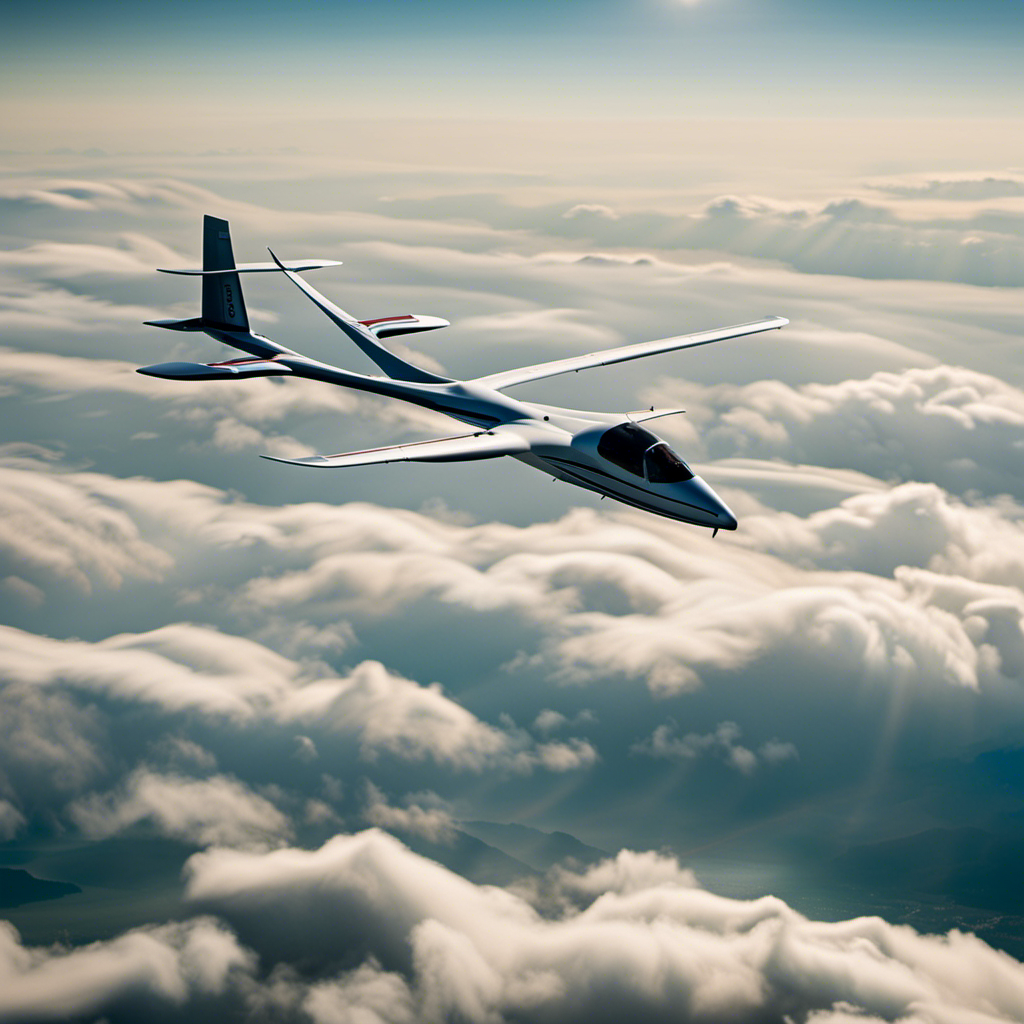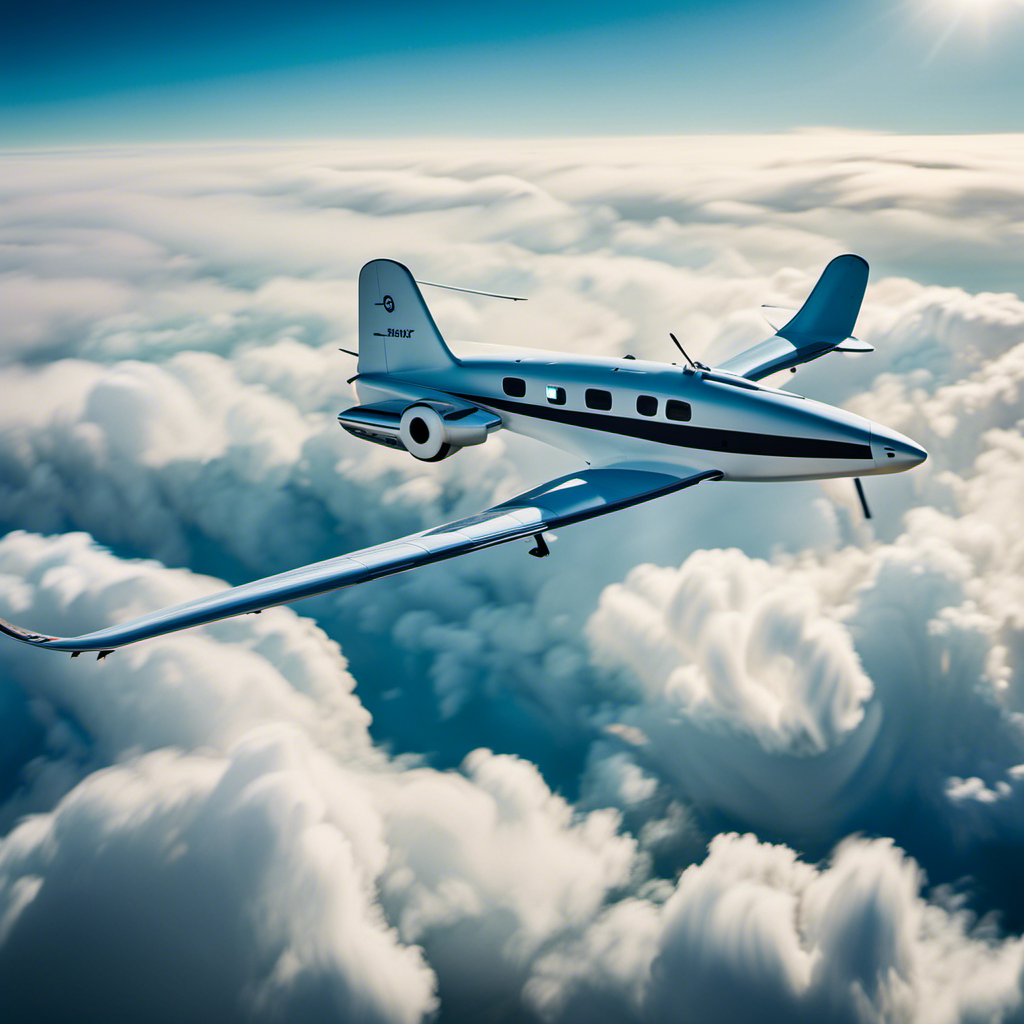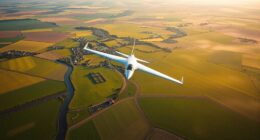Are you curious about the FAA medical certificate needed to fly a glider? Look no further, as all the information you need can be found right here.
In this article, we’ll dive into the regulations, requirements, and examination process for glider pilots. We’ll also discuss any updates or changes that have been made to the FAA medical certificate requirements.
So, let’s get started and ensure you have all the knowledge necessary to take to the skies in a glider!
Key Takeaways
- Glider pilots are exempt from specific health conditions that can disqualify them from obtaining an FAA medical certificate.
- Glider pilots are not required to hold a medical certificate as long as they meet certain criteria.
- Changes in medical certificate requirements have made it easier for individuals with certain health conditions to pursue flying.
- FAA medical certificates ensure the fitness of glider pilots to fly and contribute to the safety of glider operations.
Overview of FAA Regulations for Glider Pilots
To fly a glider, you’ll need to be familiar with the FAA regulations that apply to glider pilots. These regulations ensure the safety and competency of glider pilots.
One important aspect is understanding the different types of gliders. Gliders can vary in terms of size, weight, and performance capabilities. It’s crucial to know the specific characteristics of the glider you’ll be flying to ensure proper handling and maneuvering.
Additionally, the medical examination process for glider pilots is an essential requirement. While glider pilots are not required to hold a medical certificate, they must self-assess their fitness to fly. This involves considering any medical conditions that may affect their ability to safely operate a glider.
Understanding these regulations and requirements is vital for glider pilots to ensure a safe and enjoyable flying experience.
Moving on to classifying gliders, let’s explore the different categories and their unique features.
Classifying Gliders: Understanding Different Categories
Understanding the different categories helps classify gliders. Gliders can be classified into various categories based on their design, purpose, and performance characteristics.
The main categories of gliders include training gliders, performance gliders, and motor gliders. Training gliders are designed for beginners and have a simple and forgiving flight behavior. They are usually equipped with dual controls to facilitate instruction.
Performance gliders, on the other hand, are built for competitive soaring and can reach high speeds and altitudes.
Motor gliders are a unique category that combines gliding and powered flight capabilities.
As for pilot qualifications, glider flying requires a specific set of skills and certifications. Pilots must obtain a glider pilot license and complete the necessary training and flight hours. They must also pass a written exam and a flight test.
With a good understanding of the different glider categories, we can now explore the basic requirements for glider pilots.
Basic Requirements for Glider Pilots
Glider pilots must meet certain criteria, such as having a valid license and completing the necessary training. Glider pilot training is essential to ensure the safety and competence of pilots. During the training, pilots learn about aerodynamics, weather patterns, navigation, and emergency procedures specific to gliders. They also gain practical experience through solo flights and supervised flights with an instructor. Once the training is complete, pilots are required to pass a practical exam to obtain their license.
Flying restrictions for glider pilots vary depending on the airspace regulations and the specific glider they are flying. Gliders are typically not allowed to fly in controlled airspace unless they have obtained prior permission. Additionally, there may be restrictions on altitude, distance from airports, and specific routes that glider pilots must adhere to. It is important for glider pilots to familiarize themselves with these restrictions and stay updated on any changes to ensure safe and compliant flying.
Moving on to the types of FAA medical certificates for glider pilots…
Types of FAA Medical Certificates for Glider Pilots
There are different types of FAA medical certificates that glider pilots can obtain. It is important to understand the different categories to ensure compliance with FAA regulations.
The three main types of medical certificates for glider pilots are the third-class medical certificate, the second-class medical certificate, and the first-class medical certificate.
The third-class medical certificate is the most common and is required for most glider pilots. It involves a basic medical examination and is valid for five years for pilots under the age of 40, and two years for pilots over the age of 40.
The second-class medical certificate is required for glider pilots who fly for compensation or hire.
The first-class medical certificate is the most stringent and is required for airline transport pilots.
Understanding these different categories is essential for glider pilots to ensure they obtain the correct medical certificate for their specific needs.
Moving on to the medical examination process for glider pilots…
Medical Examination Process for Glider Pilots
To ensure compliance with FAA regulations, it’s important for glider pilots to undergo a medical examination process. This process is designed to assess the pilot’s physical and mental fitness to operate a glider safely. Here are three important steps in the medical certificate process for glider pilots:
-
Medical History Questionnaire: Pilots are required to complete a detailed medical history questionnaire. This form asks about any existing medical conditions, medications, surgeries, and other relevant information.
-
Physical Examination: Glider pilots must undergo a comprehensive physical examination performed by an FAA-approved medical examiner. This examination includes tests for vision, hearing, cardiovascular health, and overall physical fitness.
-
Documentation Submission: After completing the medical examination, pilots must submit the necessary documentation to the FAA for review. This includes the completed medical history questionnaire, medical examination report, and any additional supporting documents.
By following these steps, glider pilots can ensure that they meet the medical certificate requirements set by the FAA. This allows them to fly their gliders safely and legally.
Now let’s explore the exemptions and special considerations for glider pilots.
Exemptions and Special Considerations for Glider Pilots
If you have certain medical conditions, you may be eligible for exemptions or special considerations as a pilot of a glider.
The Federal Aviation Administration (FAA) recognizes that some individuals may have medical conditions that don’t necessarily impact their ability to safely operate a glider.
These exemptions and special considerations allow pilots with specific conditions to continue flying without the need for a medical certificate.
Conditions like color blindness, hearing loss, and certain cardiovascular conditions may qualify for exemptions.
It’s important to note that these exemptions are evaluated on a case-by-case basis, and pilots must provide the necessary documentation and undergo additional evaluations to ensure their safety.
These exemptions and special considerations aim to provide opportunities for individuals with unique medical situations to continue enjoying the thrill of glider flying.
Moving forward, let’s explore the updates and changes in FAA medical certificate requirements for glider pilots.
Updates and Changes in FAA Medical Certificate Requirements for Glider Pilots
The FAA has made updates and changes to the requirements for glider pilots’ medical certificates. These changes aim to ensure the safety and well-being of pilots and passengers.
The new FAA medical certificate requirements include a thorough medical examination by an FAA-approved medical examiner. Pilots are required to meet certain vision, hearing, and general health standards to obtain and maintain their medical certificates.
These updates are in line with the FAA’s commitment to promoting safety in aviation. Pilots must submit their medical certificates for review and renewal periodically to ensure they continue to meet the necessary medical standards.
These changes reflect the FAA’s ongoing efforts to enhance the safety of glider operations.
Now, let’s address some common FAQs about FAA medical certificates for glider pilots.
Common FAQs About FAA Medical Certificates for Glider Pilots
Are there any specific health conditions that can disqualify you from obtaining an FAA medical certificate as a glider pilot? While the FAA has specific medical requirements for pilots, there are exemptions for glider pilots. These exemptions take into account the unique nature of glider flying, which is typically less physically demanding than powered flight. Glider pilots are not required to hold a medical certificate as long as they meet certain criteria. The changes in medical certificate requirements for glider pilots have made it easier for individuals with certain health conditions to pursue their passion for flying. For more information on the specific requirements and exemptions, refer to the table below:
| Health Condition | Exemption Criteria |
|---|---|
| Diabetes | Controlled with medication and no complications |
| Heart Disease | Stable condition without symptoms or limitations |
| Vision Issues | Corrected vision to meet FAA standards |
| Hearing Loss | Use of hearing aids to meet FAA standards |
| Mental Health | No history of certain conditions like psychosis or bipolar disorder |
With these exemptions in place, glider pilots can enjoy the freedom of flying without being restricted by certain health conditions. Next, we will explore the resources and support available for glider pilots.
Resources and Support for Glider Pilots
Glider pilots have access to a variety of resources and support to enhance their flying experience. These resources are essential for ensuring safe and successful flights.
One important resource is the availability of flight schools and clubs that provide training and guidance to new and experienced glider pilots. These institutions offer comprehensive training programs, flight instructors, and access to gliders for practice and rental.
Additionally, there are numerous online forums and communities where glider pilots can connect with each other, share experiences, and seek advice. These platforms serve as valuable sources of information and support.
Furthermore, there are publications and websites that provide up-to-date weather forecasts, airspace information, and glider-specific regulations. All of these resources contribute to the overall support system for glider pilots, helping them stay informed and prepared for their flights.
Conclusion: The Importance of FAA Medical Certificates for Glider Pilots
Having a valid FAA medical certificate is essential for glider pilots to ensure their fitness to fly. Regular check-ups play a crucial role in maintaining pilot performance and ensuring the safety of both the pilot and passengers. Here are three reasons why FAA medical certificates and regular check-ups are important for glider pilots:
-
Health assessment: Regular check-ups allow doctors to assess the pilot’s overall health and identify any potential medical conditions or issues that may affect their ability to fly safely.
-
Early detection: Regular check-ups enable early detection of any underlying health problems, allowing for timely treatment and management. This helps prevent any sudden medical emergencies while in the air.
-
Pilot performance: Maintaining good health through regular check-ups can greatly impact pilot performance. By addressing any health concerns, pilots can ensure they are physically and mentally fit to handle the demands of glider flying.
Frequently Asked Questions
Can a pilot fly a glider without a medical certificate?
Yes, a pilot can fly a glider without a medical certificate. However, they must still hold a pilot license and meet the medical requirements set by the FAA.
How often does a glider pilot need to renew their medical certificate?
As a glider pilot, I need to renew my medical certificate every 48 months. The FAA requires glider pilots to have a valid medical certificate to ensure their fitness to fly.
Are there any age restrictions for obtaining a medical certificate for glider pilots?
There are no age restrictions for obtaining a medical certificate for glider pilots. However, they must still meet the medical requirements set by the FAA to ensure they are fit to fly.
What happens if a glider pilot fails their medical examination?
If a glider pilot fails their medical examination, they may face potential consequences such as temporary or permanent grounding. However, there are alternatives available, such as seeking a special issuance medical certificate or flying as a sport pilot.
Can a glider pilot with a history of medical conditions still obtain a medical certificate?
Even with a history of medical conditions, glider pilots can still obtain a medical certificate. However, they must meet the specific medical certificate requirements and demonstrate that their conditions do not pose a risk to flight safety.
Conclusion
In conclusion, getting an FAA medical certificate for flying a glider is absolutely crucial. I mean, who needs a medical certificate to fly a glider, right? It’s not like you’re piloting a big fancy airplane or anything.
But hey, the FAA knows best, apparently. So, make sure you go through all the necessary requirements and get yourself that pesky medical certificate. Who knows, it might just save your life… or something.
Happy gliding, folks!









